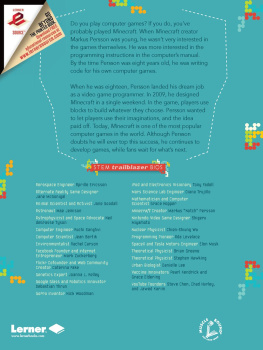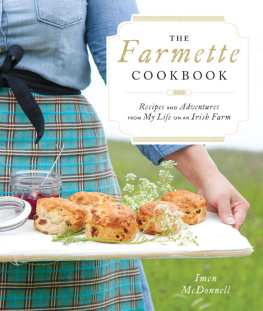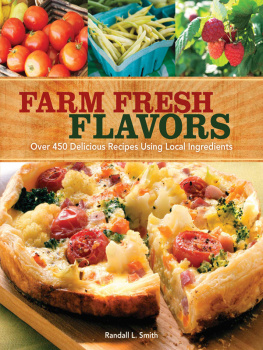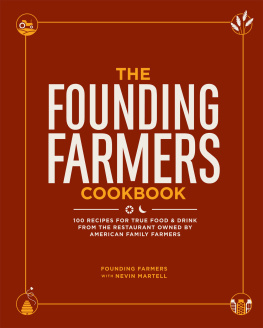The science of preserving is ever-changing, with experts at federally funded university extension services testing and making updates to existing recommendations on a regular basis. There is, therefore, an abundance of information available to the home canner. To find the extension service for your area, visit www.csrees.usda.gov/Extension .
Additionally, your local extension service will have information on preserving products native to your areawild fruits, for exampleand may also be testing updates for products similar to those that are now recommended in this book for refrigeration only. They can answer any questions you have about methods and safety, such as how to test a pressure canner, how to make adjustments for altitude, and how to dispose of food that is potentially contaminated.
The USDAs National Center for Home Food Preservation is another excellent resource: www.uga.edu/nchfp/publications/publications_usda.html . (This link allows you to download and print the USDAs Complete Guide to Home Canning.)
The University of Georgias (UGA) cooperative extension service for food preservation is a helpful site as well: www.fcs.uga.edu/ext/pubs/food/canning.php .
Additionally, the UGAs So Easy to Preservea print version with more than 185 tested recipes that includes the USDAs latest recommendations, as well as a series of demonstration DVDs, are available from www.uga.edu/setp .
Other sources consulted for this book: The Clemson University Extension Service Food Safety & Preservation website (hgic.clemson.edu/food.htm) and the University of Minnesota Cooperative Extension Service website ( www.extension.umn.edu/distribution/nutrition/DJ1089.html ).
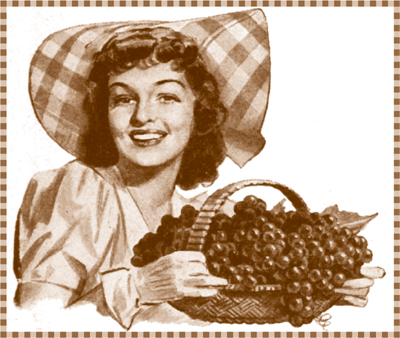

The Farmers Wife, a monthly magazine published in Minnesota between the years 1893 and 1939, offered rural women both practical advice and a glimpse of the larger world around them. In an era long before the Internet and high-speed travel connected us all, the magazine aimed to offer community among hard-working rural women in many parts of the country, to provide a forum for their questions and concerns, and to assist them in the day-to-day goings on about the farmeverything from raising chickens and slaughtering hogs, to managing scant funds and dressing the children, to keeping house and running the kitchen.
The kitchen is where the farmers wife really shone. She could be creative in the kitchen, letting her imagination run wild over stews, roasts, salads, casseroles, preserves, cakes, and cookies of her own invention. She could show off her skill, whipping up a simple, delicious meal and dessert of the utmost perfection. She could exercise one of the most esteemed qualities among country womenthat of thrift, using the eggs, milk, butter, preserves, and other stores abundant on any farmwhile at the same time showing love and care for her family through the hearty meals and delectable treats she offered them each and every day.
Issues of the magazine portray the farmers wife as a woman willing and able to economize her time in the kitchen; a woman bent on nourishing her family, both body and soul; and a women who understood the importance of laying up stores for the future. The farmers wife tackled the responsibility of feeding both family and neighbors with great seriousness and strict planning, preparing filling dishes for supper as well as tasty cakes and cookies for visitors. The farm woman prepared sweet but modest offerings to gladden the hearts of hard-working family members and friends.
This indispensable volume is a collection of our favorite recipes, culled from the Farmers Wife magazines. The recipes in this book have been reprinted much as they appeared on the pages of the magazine. Most recipes have been taken from issues spanning 19111939, and many were written by the magazines own readers. In their language, they reflect the curious style and manners of their times, and herein lies a great deal of their charm, and the reason I have chosen to alter them as little as possible. Anyone accustomed to reading cookbooks will nevertheless feel right at home among the pages of this book. After all, the farmers wife was nothing if not common-sensical, and so were her recipes.



Anyone new to cookbooksand, more particularly, historical cookbooksis advised to follow the golden rule of the recipe: read it thoroughly, start to finish, and preferably more than once, before embarking. Make sure you understand the instructions and the order in which they must be carried out; check that you have all the ingredients at hand and assembled; and be sure to preheat your oven a good twenty to thirty minutes before you are ready to bake. Wherever possible, I have attempted to abolish confusing, misleading, or laborious instructions. There are some guidelines to remember, however, when using this cookbook.
Farm Fresh Ingredients
First, the term seasonings would generally have been understood by the farmers wife to mean salt and pepper. Efforts have been made in this book to differentiate between salt and pepper seasoning and the secondary meaning of the word, which includes other herbs, spices, and flavoringsthese are listed separately on ingredients lists.
Farm women once had an ample supply of bacon and other drippings readily at hand, kept in a coffee can and used almost daily. Most contemporary cooks dont keep their drippings, so oil or butter can be substituted as appropriate. When a recipe calls for both bacon and drippings, the fat leftover from frying the bacon can, of course, be used for just this purpose.
In any recipe, shortening can be substituted for lard; fat can be interpreted as butteruse accordingly.
Aside from cottage cheese, which could be readily produced by pouring hot water over thick, sour milk (a common farm product), the farmers wife did not make much cheese, unless she was engaged in its commercial manufacture. She had ample access to store cheese, though, which is how she commonly referred to cheddar. Recipes in the Farmers Wife magazine sometimes referred specifically to other types of cheese, such as American or Parmesan; mostly, though, the original recipes are vague in the type of cheese to use. Experienced or adventurous cooks are encouraged to follow their instincts as to what sort of cheese might be used in any dish.
Honey was not necessarily a common farm staplethe farmers wife more frequently used sugar in her cooking and baking. Recipes in the magazine almost always refer to strained honey, which is the clear, liquid version most of us buy these days, honey removed from the comb and strained free of wax and crystals. Any store-bought honey not in the comb will suffice for the recipes here.



